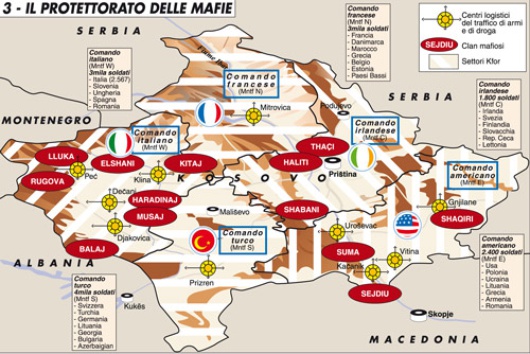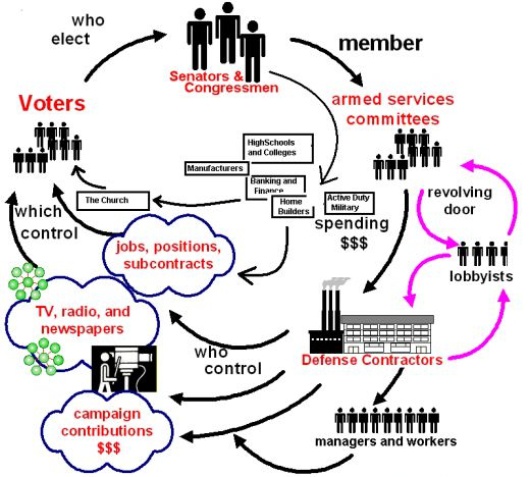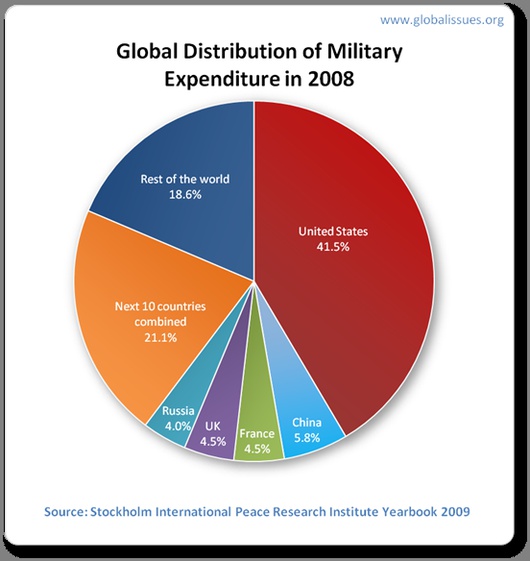Media War of Yugoslav Secession continues
Published on
”Who needs facts if a good story is available?” (Ari Rusila) A few weeks ago I promoted new Srebrenica documentary film Srebrenica: A Town Betrayed . Everybody was not happy about critical view of documentary. E.g the Norwegian Helsinki Committee made official complaint to Norwegian Broadcasting Council and Press Complaints Commission.
This is not surprising as media war in Bosnia started same time as war on the ground. While the whole artificial outside forced state creature without any own identity is now openly tottering the media again is the tool to improve political interests.
[youtube=http://www.youtube.com/watch?v=RUuhSGnLvv8&feature=player_embedded]
Filmmakers and investigative journalists Ola Flyum and David Hebditch, authors of “Srebrenica: A Town Betrayed”, have been subjected to denunciations by interested parties in Bosnia and in the Bosniak diaspora for presenting their critical and challenging documentary about the war in Bosnia-Herzegovina. The filmmakers have prepared a detailed issue-by-issue 43-page Response to the derogatory allegations that have been made against them and this document - 2 Response to NHC Complaint ENG - is available in my document archive.
Media War in Bosnia
“The media did more damage to us than Nato bombs.” (Radovan Karadzic)
The 'Holocaust model',promoted by governments and media, and generally accepted by western public opinion, presented the war as a genocidal war by Serbs against the Bosnian Muslim (Bosniac) population. The war was presented as morally equivalent to Auschwitz - and western intervention as a moral crusade, which no reasonable person could oppose. Few people in western Europe today believe that Serbs are 'a nation of genocidal rapists', but that is how many people saw them in the mid-1990's.
One fabrication got headlines around the world as in 1992 an ITN TV-news shot footage of men staring out from behind barbed wire. They were Bosnian prisoners inside a Serbian concentration camp, ITN explained. An emaciated Muslim caged behind Serb barbed wire, filmed by a British news team, became a worldwide symbol of the war in Bosnia. But the picture is not quite what it seems. It took years before a German journalist Thomas Deichman described how the famous photo was staged by its takers. The picture was very misleading: the ITN photographers were actually inside the compound, and their subjects were outside the fence, looking in. Deichmann reveals the full story in his article The picture that fooled the world. However by that time (1992) the image had done its deed, labeling the Serbs as genocidal mass murderers.
An expample: How to win media war?
Richard Palmer describes one episode of successful media war in his article What Really Happened in Bosnia publiched in TheTrumpet.com
Serbia’s earliest defeat came in the PR war. Early on, Serbia’s enemies engaged Ruder Finn, an American public relations firm, to get their message out. James Harff, director of Ruder Finn’s Global Public Affairs section, boasted about his success against Serbia.
“Nobody understood what was going on in (former) Yugoslavia,” he said in an October 1993 interview. “The great majority of Americans were probably asking themselves in which African country Bosnia was situated.” Ruder Finn took advantage of this ignorance. Its first goal was to persuade the Jews to oppose the Serbs—not an easy task. “The Croatian and Bosnian past was marked by a real and cruel anti-Semitism,” said Harff. “Tens of thousands of Jews perished in Croatian camps. So there was every reason for intellectuals and Jewish organizations to be hostile towards the Croats and Bosnians.”
Harff used a couple reports in the New York Newsday about Serbian concentration camps to persuade Jewish groups to demonstrate against the Serbs. “This was a tremendous coup,” said Harff. “When the Jewish organizations entered the game on the side of the Bosnians, we could promptly equate the Serbs with the Nazis in the public mind.” He continued: “By a single move, we were able to present a simple story of good guys and bad guys which would hereafter play itself. We won by targeting Jewish audience, the right target. Almost immediately there was a clear change of language in the press, with the use of words with high emotional content, such as ‘ethnic cleansing,’ ‘concentration camps,’ etc., which evoked inmates of Nazi Germany and the gas chambers of Auschwitz. The emotional change was so powerful that nobody could go against it.”
The fact that the mujahedin had taken over Bosnian Serb towns and villages, had tortured and executed, had ethnically cleansed and displaced Bosnian Serbs and Croats POWs at will has been ignored. Videotapes and reportage were made of these war crimes so it is easy to create a wider picture also today.
Srebrenica
Mostly forgotten perspective is the context in which Srebrenica events occurred.
In charge of the Muslim forces in Srebrenica was Naser Oric. Here is how French Gen. Philippe Morillon, commander of the UN troops in Bosnia from 1992 to 1993, described him: “Naser Oric engaged in attacks during Orthodox holidays and destroyed villages, massacring all the inhabitants. This created a degree of hatred that was quite extraordinary in the region ….” In another part of his testimony, he stated, “There were terrible massacres committed by the forces of Naser Oric in all the surrounding villages.” It was this hatred and circle of revenge that led to the Srebrenica massacre. The Serbs finally reacted to Oric’s provocations. When they took Srebrenica far more easily than they thought they would they took their revenge on the men they found there. But, unlike Oric, they let the women and children go. Thus it was not an ethnic cleansing, instead it was a partly crime provoked by crimes on the other side. Partly as mostly the dead in Srebrenica on July 1995 happened when 28. Muslim Division tried to escape from town to Muslim held Zenica (as they knew the amounth of hatred among local Serbs) and lost their life during this operation.
In his latest book titled “Srebrenica — The History of Salon Racism” (Srebrenica — die Geschichte eines salonfahigen Rassismus) published 2010 in Berlin, Alexander Dorin focuses on manipulations with the number of Muslims who lost their lives in Srebrenica. “It is perfectly clear that Muslim organizations listed as Srebrenica victims all the Muslim fighters who were killed in the fights after the fall of Srebrenica,” the Swiss researcher said. Dorin explained that director of the Belgrade Center for Investigation of War Crimes Milivoje Ivanišević analyzed the lists of alleged Srebrenica victims. Ivanišević discovered that, a year after the fall of Srebrenica, some 3,000 Muslim men who were supposedly killed in 1995, were voting in the Bosnian Muslim elections. It asserted that no more than 2,000 Bosnian Muslims had died at Srebrenica - all armed soldiers, not civilians - and that 1,600 of them had died in combat or while trying to escape the enclave. In addition, at least 1,000 of the alleged 1995 “Srebrenica massacre victims” have been dead long before or after Bosnian Serb Army took the town over.
The Star Wittness
Germinal Civikov is a native of Bulgaria living nowadays in The Hague and Cologne. In his book, “Srebrenica: Der Kronzeuge” (Wien: Promedia, 2009, published also in English as ”Srebrenica: The Star Wittness) Civikov explains that the ICTY ruling that genocide was committed at Srebrenica on the orders of the Bosnian Serb leadership is based on the testimony of a single witness, a self-confessed perpetrator of one of the massacres called Drazen Erdemovic. Civikov shows that in fact Erdemovic is a pathological liar, he was a mercenary who fought on all three sides in the Bosnian civil war. He was not forced to commit the massacre, indeed his unit was on leave when the massacre was committed. He was not the victim of a later murder attempt to prevent him from testifying, but instead a thug who quarrelled over money with his fellow murderers.

Best Practice in use: Croatia
In Croatia the right-wing party, the Ustashi, came to power using fascist symbols and slogans from the era of Nazi occupation. Its program guaranteed a return to capitalist property relations and denied citizenship, jobs, pensions, passports or land ownership to all other nationalities, but especially targeted the large Serbian minority. In the face of armed expropriations and mass expulsions, the Serbs in Croatia began to arm themselves. The experience of World War II—when almost a million people, primarily Serbs, but also Jews, Roma and tens of thousands of others died in Ustashi death camps—fueled the mobilization. In deed Slobodan Milosevic was equated with Adolph Hitler, which in case of Croatia is quite strange as the Croatian forces during World War II were actually explicitly pro-Nazi and implemented holocaust against Serbs, Jews and other groups in Jasenovac concentration camp (3rd largest of them in Europe during WWII).
In August 1995, Croatia launched a savage attack on Krajina, a region of Croatia that Serbs had inhabited for 500 years. Within four days, the Croatians drove out 150,000 Serbs, the largest ethnic cleansing of the entire Balkan wars. Investigators with the war-crimes tribunal in the Hague have concluded that this campaign was carried out with brutality, wanton murder and indiscriminate shelling of civilians. These war crimes and cleansing were passed over in silence in western media as Croatia was being advised by a shadowy group of retired American officers who had been sent to Croatia to help it fight against the Serbs. In fact especially western mainstream media actively and carefully ignored and covered up the war crimes that its allies committed in Croatia and later in Bosnia and Kosovo.
It is estimated that more civilians were killed in Krajina than Srebrenica, but this consequence was virtually ignored by the Western media and never regarded, as was Srebrenica, a genocide. For Croatian leaders Krajina was the reward for having accepted, under Washington’s pressure, the federation between Croats and Muslims in Bosnia.
A former US ambassador to Croatia - Peter Galbraith, testifying in The Hague war crimes trial - accused Zagreb of plotting and sanctioning the exodus of Serbs in 1995 to create an "ethnically clean" country.
“Croatian authorities either ordered or allowed a mass destruction of the Serb property in former (Serb-held region of) Krajina to prevent the return of the population. I consider that to have been a thought through policy” … ”Croatia was an organised country, its army the most disciplined in former Yugoslavia, and therefore I cannot accept that the illegalities that occurred after Storm were spontaneous,” … “President Tudjman and people around him wanted it, wishing for an ethnically clean country.” (Source BalkanInsight )
More about ”Operation Storm” in my article Krajina – Victory with Ethnic Cleansing
Best Practice in use: Kosovo
In Kosovo U.S. With help of western media used the same best practice as earlier in Croatia and Bosnia. The main elements were need of humanitarian intervention, multiplying (with 10-50) civilian deaths and fabricating massacres. More coverage e.g in High pressure to fabricate Racak reports ja 10th anniversary of Nato’s attack on Serbia) ). In West the war-crimes and other atrocies aginst Serbs were either ignored or labeled as propaganda. Only years after war some reports or new investigations are telling also the other side of story . One of the most important document is the one which Swiss prosecutor-politician Dick Marty gave for Council of Europe Parliamentary Assembly (PACE) on Dec 2010. The report, “Inhuman treatment of people and illicit trafficking in human organs in Kosovo” claims that civilians – Serbian and non-KLA-supporting Kosovan Albanians detained by the KLA in the 1999 hostilities – were shot in northern Albania and their kidneys extracted and sold on the black market. It names Hashim Thaçi, the former leader of the KLA and Kosovo's prime minister, as the boss of a "mafia-like" group engaged in criminal activity – including heroin trading – since before the 1999 war. More e.g in Kosovo: Two years of Pseudo-state and Captured Pseudo-State Kosovo .
Mafia Clans/KFOR sectors -map made by Laura Canali
KLA's transformation from OC-/terrorist group to freedom fighters was an amazing media victory which guaranteed the occupation and later capturing of Kosovo. Since then the efforts have been made to whitewash the past and creating a quasi-independent puppet state for safe haven for terrorists and OC. One of latest episodes of media war was played recently when Kosovo’s government has discretely engaged the lobbying services of one of Washington’s top firms (Patton Bogg) for $50,000 a month. Frank Wisner, Patton Bogg's foreign affairs advisor, met Thaci in the United States last July (2011). Interesting detail is that mentioned Wisner was the US’s special representative to the Kosovo Status Talks in 2005 - like in role of neutral facilitator of talks. Wisner played a crucial role in negotiating Kosovo’s independence. (Source BalkanInsight ).
Receptive mind in West
"He may be a son of a bitch, but he's our son of a bitch." (Franklin Roosevelt)
As described earlier Bosnian Muslims, Croatians, Kosovo Albanians and their hired lobbyists made very successful media campaign for their case in western mainstream media and in capitals of West. However the campaigns might not have been so effective unless the politicians were so amenable to campaigner's views. In my opinion this receptivity is linked to geopolitical changes and interests. After the collapse of the Soviet Union, US big business was focusing on reshaping all of Europe. Nato had lost its enemy and military-industrial complex was afraid to lose its old markets. Nonaligned Yugoslavia was no longer needed in this context. The interest of US Military-industrial complex and Pentagon's was in creating weak, dependent puppet regimes to Balkans, Black Sea region, Caucasus in order to dominate these regions and their energy sources and transportation routes - economically and politically. Without this political and business interest it would not be so easy for PR-agencies to demonize the Serbs, to hide the reality of Croatian fascism, to canonize the Bosnian Muslims, and to whitewash OC-clans in Kosovo.
Military-industrial Complex shaping US-policy
Global military industrial consumption per year is 1.5 trillion U.S. dollars. US share of the cake is about 40% to the current year, 664 billion dollars. This is a good comparison of the UN budget (27 billion), which is a sum of nearly three per cent of its Member States on military expenditure. Peace work is estimated to get yearly 6 billion and conflict prevention 0.6 billion.
US military-industrial complex has been shaping the country’s economy and affecting its foreign policy. A recent count found the Department (Defense) had 47,000 primary contractors, or over 100,000 firms, including subcontractors. Even academia is in tow, with about 350 colleges and universities agreeing to do Pentagon-funded research.

To keep the media on Pentagon's side, in the US and elsewhere, the military allocates nearly $4.7 billion per year to “influence operations” and has more than 27,000 employees devoted to such activities.
The international community is now willing to invest 200 times more to the war than peace. Against one peace researcher, is estimated to be more than 1100 researcher for weapon (and their use) developers. The difference in what countries are prepared to invest in weapons and their use is huge compared to what they use for example, poverty elimination and economic development in developing countries. And just poverty is one of the causes of violence.

More e.g in my article $1tn G20 deal vs. MI(MA/E)C
More aggressive policies needed a justification for intervention so it was not so surprising when US administration rushed to the Srebrenica scene to confirm and publicize the claims of a massacre, just as William Walker did later at Racak in January 1999. The numbergame in media was similar in Bosnia and Kosovo as later the civilian casualties were confirmed to be in reality some 10 % of that what was marketed before attacks. Same time in Bosnia case U.S officials also diverted attention from larger-scale ethnic cleansing such as Croatian attacks on Serb populated UN Protected Areas (UNPAs) in Western Slavonia (“Operation Flash”) and the Krajina region (“Operation Storm”) in May and August of 1995. Maintaining later an image of demonized Serbs helped Kosovo Albanians implement their ethnic cleansing operations in Kosovo.
My view
The bottom line is that the PR-agencies got their message through the western mainstream that some ethnic cleansing was going on in Croatia, Bosnia and Kosovo, US administration used created picture to officially stop it and unofficially to improve their own interests. Now people also outside the Balkans understand that US forces intervened against Serb – supposed - ethnic cleansers, but in reality intervened on the side of Croat and Albanian ethnic cleansers.
Some sources and more:
Media War: The Use and Mis-Use of the Visual Image in News Coverage and Propaganda . A study of the visual media war against the Serbs.
Demonizing the Serbs by Marjaleena Repo June 15, 1999 in Counterpunch
One view about issue in video Bosnia and Media Manipulation and The Politics of Genocide foreword by Noam Chomsky by Edward S. Herman and David Peterson



